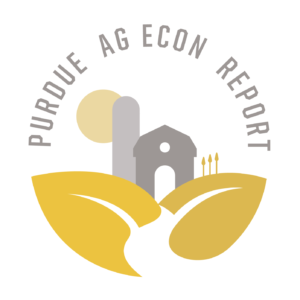SBA Help for Small (and Family) Businesses
April 13, 2020
PAER-2020-02
Authors: Renee Wiatt, Family Business Management Specialist, and Maria I. Marshall, Professor and Director of Purdue Institute for Family Business
The U.S. Small Business Administration (SBA) has options for businesses that have been disrupted or otherwise affected by the COVID-19 pandemic. The pandemic has caused disruption or economic injury for many businesses. The pandemic has altered normal business operation as well as access to employees and customers, ultimately resulting in loss of sales. The President has signed the CARES (Coronavirus Aid, Relief, and Economic Security) Act into law. The CARES Act provides potential relief for employees and businesses. The CARES act and its four main provisions through SBA are further explained at the end of this article.
The CARES Act contains four main provisions, explained as follows:
- The Paycheck Protection Program (PPP) allows employers to keep paying employees. An added incentive of the PPP is that “SBA will forgive
all loans if all employees are kept on payroll for eight weeks and the money is used for payroll, rent, mortgage interest, or utilities”. Obligations starting as of February 15, 2020 are eligible to be covered.- Application timeframe: April 3rd, 2020 – June 30th, 2020. Funds are dispersed on a first- come-first served basis.
- Independent contractors and the self-em- ployed can apply as of April 10th.
- Who can qualify: Small businesses with less than 500 employees (from sole proprietor- ships to LLC’s, non-profits, Tribal businesses, and veterans organizations).
- Extra details: Loans will be fully forgiven if the loan is used for qualifying expenses (pay- roll, mortgage interest, rent, and utilities). At least 75% of the loan amount must be applied toward payroll for loan to be fully forgiven.
- The loan needs to be repaid in two years and has an interest rate of 1%.
- Application sites: Include but not limited to an existing SBA 7(a) lender, federally insured depository institution, federally insured credit union, Farm Credit System institution, and other regulated lenders as they are approved and enrolled.
- Economic Injury Disaster Loan Emergency Advance is a loan advance program that can provide up to $10,000 of economic relief to businesses that are being affected by COVID-19.
- Who can qualify: Businesses with fewer than 500 employees and those businesses with over 500 employees if they meet SBA’s size standards for their given industry.
- Extra details: Funds can be made available within days of an application being submitted. This loan advance does not need to be repaid.
- The SBA Express Bridge Loan Pilot Program is available for small businesses that have an urgent need for cash. The loans can be up to $25,000.
- Who can qualify: Small businesses with an already-established relationship with an SBA Express Lender.
- Extra details: These loans provide quick funds to help small businesses overcome a tempo- rary revenue loss. The loan will eventually
be repaid in full or partially by the Economic Injury Disaster Loan, mentioned above.
- SBA Debt Relief is a program to provide a break from SBA debt repayments.
- Who can qualify: Small businesses with SBA loans (current 7(a), 504, and microloans) that are under “regular servicing” status as of March 1st, 2020.
- Extra details: SBA will pay principal, interest, and fees for six months for current SBA loans. In addition, SBA will pay principal, interest, and fees of new loans issued before September 27, 2020. Under the six-month period, interest will continue to accrue.
After knowing what the CARES Act contains, small businesses should have two main questions: 1) Has SBA assistance helped businesses in the past? and 2) If so, by how much did the assistance help?
Tomoko Hiramatsu and Maria Marshall explored the impact of SBA disaster loans following Hurricane Katrina. They found that when a business received a SBA disaster loan, that business was positively affected in both objective and subjective business performance (i.e., perceived success and percent change in revenue from before to after Hurricane Katrina). Overall, disaster loans did help businesses to recover from Hurricane Katrina.
References
Hiramatsu, T. and M.I. Marshall. (2018). “The long- term impact of disaster loans: The case of small businesses after Hurricane Katrina”. Sustainability, 10, 2364.
The Purdue Institute for Family Business publishes a quarterly newsletter loaded with information about estate and personal planning, leadership and succession planning, tips for maintaining family bonds, and strategic business planning. The next edition will be released in late-April. Get a sneak peek here.
